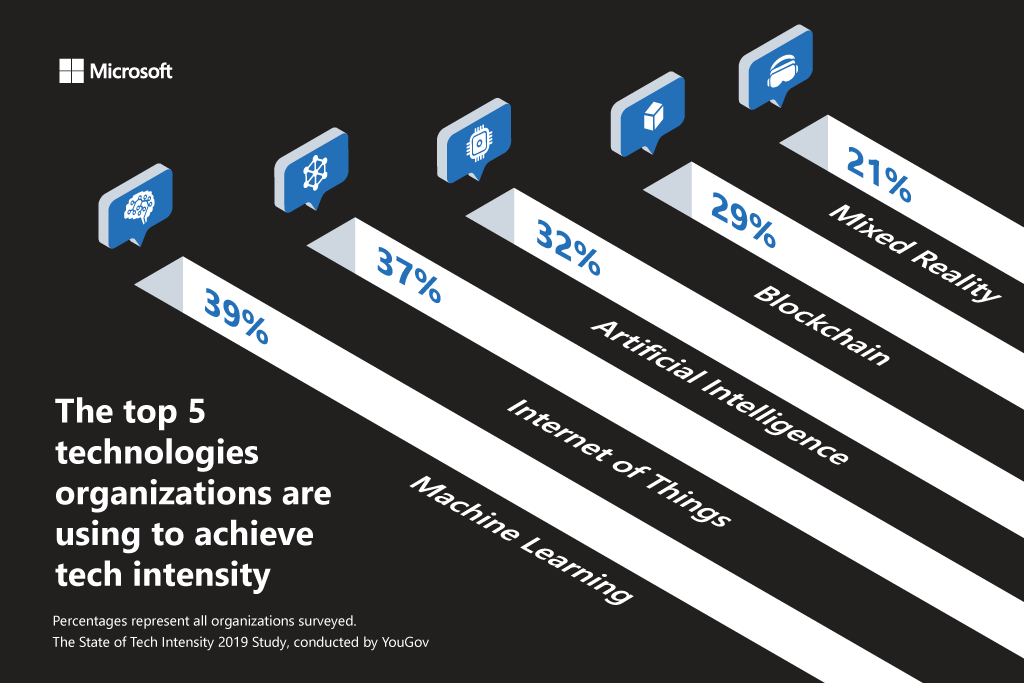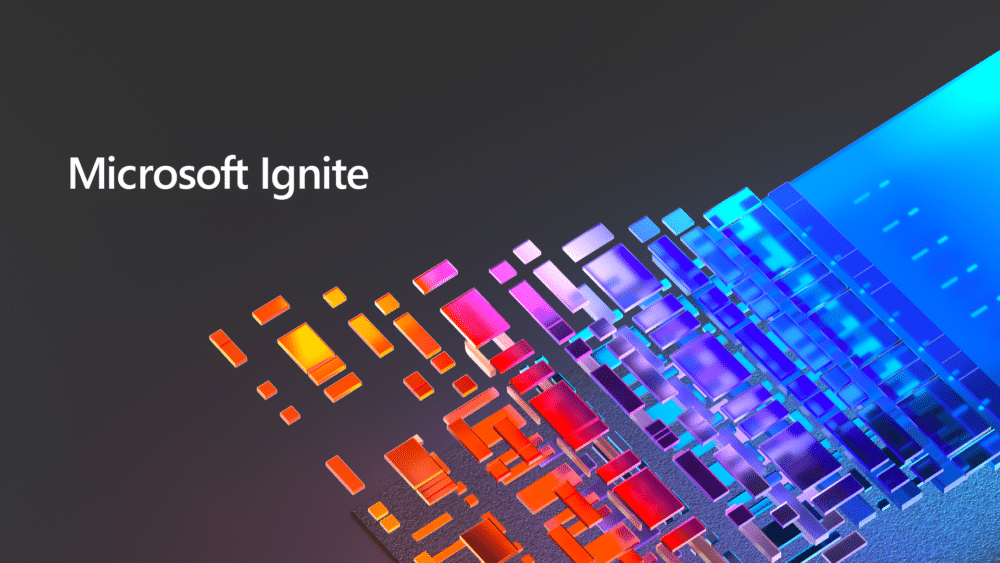Tech Intensity: Expanding Beyond Digital Transformation
One of the big tech buzzwords in 2020, and leading up to it, was digital transformation. Perhaps a good one to ponder as we move into 2021 is tech intensity. Microsoft CEO Satya Nadella has often mentioned this latter term during his keynotes. (He coined it in 2018 and brought it up again more recently at the Ignite 2020 conference.) It's a way to consider the evolution of companies today: first we saw (and are still seeing) that digital transformation that led organizations out of legacy, on-premises infrastructure into the cloud realm; now we're looking at the rate and intensity of digital technologies being applied for the success of those organizations. This tech intensity is really taking off, and the most successful companies are the ones who recognize how to use it to their advantage.
Tech Intensity = Rate of Tech Adoption + Tech Capability

A simple way to think about tech intensity is as the rate of adoption of new technologies and the capability to fully integrate them into the organization. This presupposes the cloud environment that digital transformation brought companies into. It's an extension beyond that default stance, taking innovation even further. Cloud computing is much faster, so innovation snowballs once it's digitally transformed. Microsoft's own progress this year has been accelerating exponentially---for example, in expanding its intelligent edge to IoT devices and Azure Stack Edge with native 5G support, or the announcement of Azure Orbital to manage satellite communications. Other companies can jump on the possibilities of increased innovation and speed as well, if they can keep up.
The Role of Artificial Intelligence

One of the crucial innovative technologies that tech-intense companies are making use of is AI, including machine learning. This is only a natural move after operations have transferred to the cloud and business and technological strategies have begun to be updated. Especially with new challenges under COVID-19, AI is helping anticipate needs, discover solutions, and deal quickly with massive amounts of data. It's giving organizations an edge that competitors simply won't be able to surpass. As one writer put it, "AI will define tech intensity like cloud computing defined digital transformation."
Microsoft's State of Tech Intensity 2019 Study
In December 2019, Microsoft released a report based on a study they did to assess tech intensity among companies. The study surveyed 700 executives (from U.S. companies across 20 different industries) regarding their use of advanced technologies and their perceptions of such technologies' significance. They found tech intensity to be high, and thus pervasive, among the enterprises they interviewed. 75% of respondents said they believe harnessing tech intensity is the most effective way to build competitive advantage today, and that it will continue to be a crucial advantage in the future. Those that expected the most disruption from tech-intense innovations were financial services, media & communications, automotive, and retail industries. The image below shows the top five technologies that the participating companies are using. It's clear that, as stated, machine learning and artificial intelligence are important areas driving technology.

The study also found that business edge is not the only thing motivating tech intensity. Many respondents expected it to lead to a positive impact on global communities and also help level the global economic playing field. These are the areas where respondents expected to see societal improvement as a result of tech intensity:
- Better public services at lower costs (43%)
- Improved connectivity in rural areas (40%)
- Reduced corporate waste (40%)
- Improvements in health care (36%)
- Enhanced consumer safety (36%)
- Better worker safety (33%)
- More access to financial services (33%)
A small percentage of respondents (8%) said they don’t expect tech intensity to bring about any positive benefits for global communities, and 19% said they actually expect tech intensity to have a negative impact on economic growth in less wealthy, less connected and less digitally sophisticated countries.
Tech Intensity is Only Likely to Get More Intense
As Microsoft's 2019 report stated, "The past decade has been a period of unusually rapid change and disruption as organizations worldwide have implemented a breadth of technology solutions to transform how they understand their customers, empower employees and optimize operations." And this was to say nothing of 2020---or of what we might now encounter in 2021. The world is transforming, and organizations need to do so as well in order to compete and thrive.
As your company’s tech intensity grows, you may want to consider designating a Change Advisory Board (CAB). Read more about CABs here.
Stay connected. Join the Infused Innovations email list!
Share this
You May Also Like
These Related Posts

Top Announcements from Microsoft Ignite 2020

Top 10 Announcements from Microsoft Ignite 2021

No Comments Yet
Let us know what you think